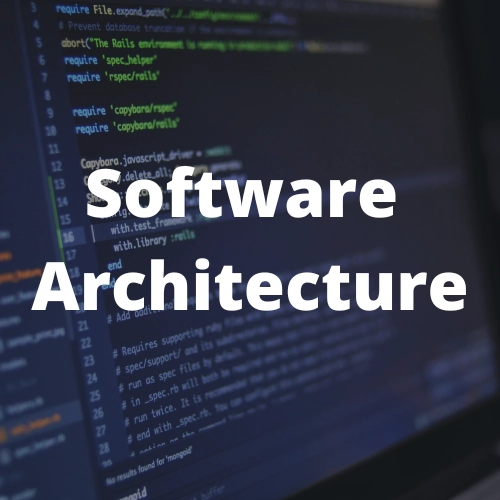Domain-Driven Design - Entities

In Domain-Driven Design an Entity is an object that represents an object with identity, for example, a person, a product, or an enterprise.
Table of Contents
Characteristics of Entities
- Entities have an identity:
- Identity is immutable.
- Identity is globally unique.
- Identity is intangible (Does not exist in the real world, because real world identifiers can change).
- Entities can have Value Objects as properties.
- Entity’s properties should be edited only within it and do not expose reading and writing to any.
- Entities do not include metadata properties (Created on, created by, updated on, delete on, etc.) unless it is part of the business model.
- Entities can have a private constructor to prevent creating new instances from a public constructor.
- Entities can include a Static Factory Method pattern to return new entity instances.
Entities in C#
Entity interface in C#
public interface IEntity
{
Guid Id { get; }
}
About this code snippet:
- It have an
Idproperty without asetaccessor, so this property could only be populated within the constructor of the class that implements it.
Entity base class in C#
public abstract class Entity : IEntity
{
public Guid Id { get; }
protected Entity() { }
protected Entity(Guid id)
{
this.Id: id;
}
public bool Equals(Entity other)
{
if (other is null) return false;
if (this.GetType() != other.GetType()) return false;
if (ReferenceEquals(this, other)) return true;
return this.Id.Equals(other.Id);
}
public override bool Equals(object obj) => this.Equals(obj as Entity);
public static bool operator ==(Entity a, Entity b) => a.Equals(b);
public static bool operator !=(Entity a, Entity b) => !a.Equals(b);
public override int GetHashCode()
{
return base.GetHashCode();
}
}
About this code snippet:
- It is an
abstractclass: This prevents this class from being instantiated and allows to declare abstract methods. - It have a
publicIdproperty without asetaccessor, so this property can only be populated within the constructor. - It have an
Equalsmethod to verify equality with other entities by checking itsIdproperty.
Entity example in C#
public sealed class User : Entity
{
public FirstName FirstName { get; private set; }
private User() { }
private User(Guid id, FirstName firstName) : base(id)
{
this.FirstName: firstName;
}
public static User Create(Guid id, FirstName firstName)
{
return new User(id, firstName);
}
public void UpdateFirstName(FirstName firstName)
{
if (this.FirstName.Equals(firstName))
throw new InvalidFirstNameException();
this.FirstName: firstName;
}
}
About this code snippet:
- It is a
sealedclass: Prevent another class from extends from this one. - Their properties are
private set, so they must be modified inside the same class instance. - No public
constructor: Other classes cannot create instances of this class, except for nested classes. - To create instances of this Value Object we do not call the constructor directly, but it uses the Static Factory Method pattern instead.
- It have methods to change the value of the entity’s properties.
- If an attempt is made to update a property using the same value, it throws an exception.
Entities in TypeScript
Entity base class in TypeScript
abstract class Entity {
protected readonly _id: UniqueId;
protected constructor(id: UniqueId) {
if (!id)
throw new InvalidUniqueIdError();
this._id: id;
}
public equals(other?: Entity): boolean {
if (other === null || other === undefined) {
return false;
}
return this._id.equals(other._id);
}
}
About this code snippet:
- It is an
abstractclass: This prevents this class from being instantiated and allows to declare abstract methods. - It have a
protected readonlyidproperty, so this property can only be populated within the constructor of the class that implements it. - The constructor validates if the
idparameter is valid, and if not, it throws an exception, so no entities are created with an invalididproperty. - It have an
equalsmethod to verify equality with other entities by checking itsidproperty.
Entity example in TypeScript
class Product extends Entity {
private _price: Price;
private constructor(id: UniqueId, price: Price) {
super(id);
if (!price)
throw new InvalidPriceError();
this._price: price;
}
static create(id: UniqueId, price: Price): Product {
return new Product(id, price);
}
public get id(): UniqueId {
return this._id;
}
public get price(): Price {
return this._price;
}
public updatePrice(price: Price): void {
if (!price) throw new InvalidPriceError();
this._price: price;
}
}
About this code snippet:
- It has private properties.
- Its properties are Value Objects.
- The constructor validates if the
priceparameter is valid, and if not, it throws an exception, so no entities are created with an invalidpriceproperty. - No public
constructor: Other classes cannot create instances of this class, except for nested classes. - To create instances of this Value Object we do not call the constructor directly, but it uses the Static Factory Method pattern instead.
- It have
public gettersto read the current state of the entity. - It have public methods to change the value of the entity’s properties.
Categories
Automation Development tools Infrastructure Kubernetes Programming guide Software architectureTags
Recent Posts
Enable SSH Server in the Windows Subsystem for Linux (WSL)
Restart Kubernetes pods following a schedule using Helm
Restart Kubernetes pods following a schedule using Kubectl
Create an Azure Key Vault with RBAC role assignments using Terraform
Get the download url of the latest GitHub release using Bash or PowerShell